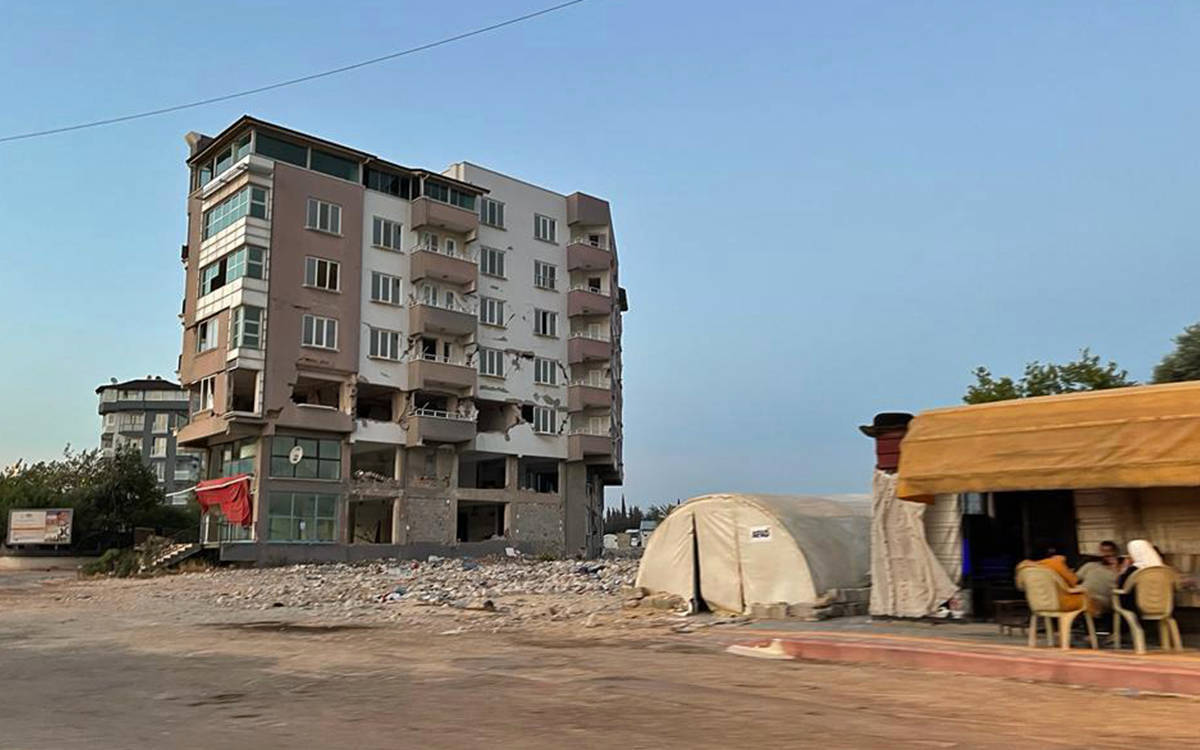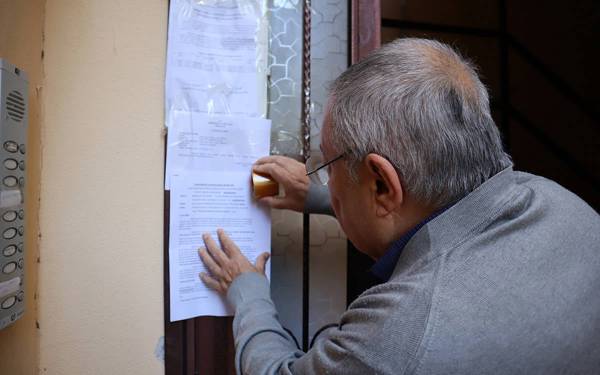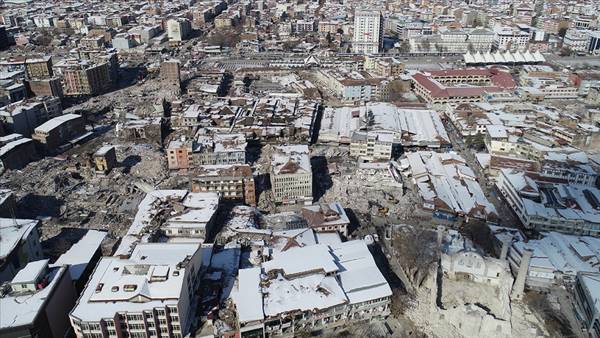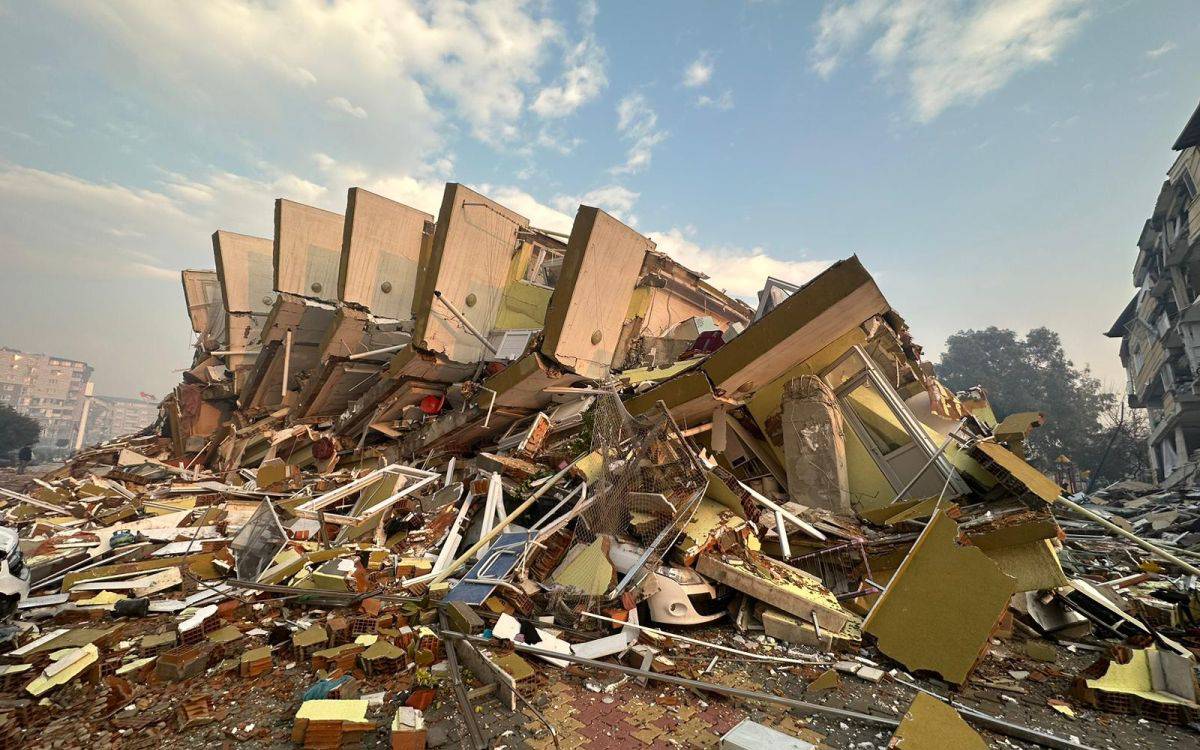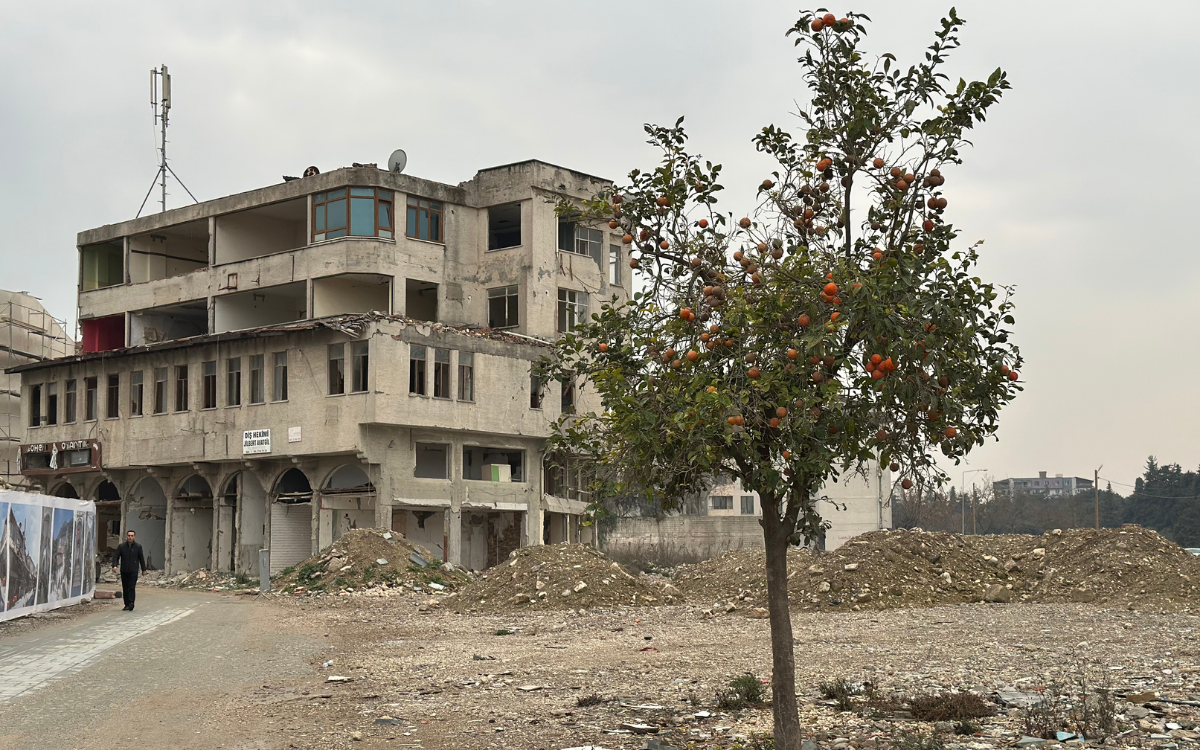Some residents of Hatay, who went outside whenever possible during the pandemic lockdowns, now find themselves unable to locate their homes. The reason is not a lack of knowledge of the address, but the absence of a home to go to. The earthquakes on February 6, like the epics of Anatolia, gave everyone a story.
With the earthquake, people lost not only their lives but also their guiding stars. The local people not only lost their homes and belongings in the earthquake but also their futures. Now, they are trying to start not from “scratch,” but perhaps from “negative.”
On the night of February 6, two consecutive earthquakes with a magnitude of 7.5 within nine hours occurred and 13,512 houses or workplaces collapsed. Due to the damage they sustained, 75,508 independent sections became unusable, and demolition decisions were made. İskenderun Mayor Fatih Tosyalı recalls that during and after the earthquake, 27,000 houses and workplaces collapsed in the city, and the demolition of severely damaged buildings continues.
İskenderun Governor Murat Sefa Demiryürek also stated that the structures heavily damaged and declared for demolition in the February 6 earthquakes accounted for 17% of the total urban structure stock in İskenderun. Governor Demiryürek mentioned that 87.41% of the heavily damaged buildings have been demolished, and the remaining 588 buildings are awaiting legal processes.
"We cannot demolish despite court orders"
Governor Demiryürek, noting that the Ministry of Environment, Urbanization, and Climate Change identified 3,298 heavily damaged buildings in the district, and 2,704 of them have been demolished, says:
"There are lawsuits filed by citizens regarding the determination of heavily damaged buildings and demolition decisions, and there are 'precautionary measures' or 'stay of execution' decisions given based on these lawsuits. Despite court decisions, we cannot demolish. Sometimes, our citizens express their grievances through social media, even publishing images in the city center, asking, 'why aren't these buildings demolished?' They are right, but due to being in court, they are not demolished. Despite the court decision, we do not have the luxury of demolishing. Our priority is the law. As the legal process for these remaining structures is concluded, we will demolish them."
Demiryürek also mentioned that efforts are being made to heal the wounds of the people in İskenderun and return the region to normal as soon as possible, highlighting that the city's industry and social life are still standing, increasing its attraction. He noted that the population density in the city reflects not only the number of passing vehicles but also the amount of urban waste.
As months pass after the earthquake, the delivery date of the buildings not yet started and the number of buildings to be constructed remain uncertain. In Hatay, where nearly 200,000 people continue to live in containers and tents, routines and normals have changed. While Antakya, Kırıkhan, Defne, Hassa, and Samandağ city centers disappeared with the earthquake, İskenderun, Arsuz, Belen, and Altınözü were heavily and moderately affected.
Most migrated cities: Arsuz and İskenderun
In Hatay, which has 15 districts, the entire region was affected by the earthquake. Asaf Güven, the Mayor of Arsuz, describes the city as a 'moderately damaged city' and states that more than 10,000 houses and workplaces have collapsed.
Arsuz, in addition to being in Hatay, was used as a summer city where people from Southeast Anatolia, Eastern Anatolia, and Inner Anatolia, such as Ankara, had their second residences. Despite the moderate damage, Arsuz is in the position of the district that received the most migration, along with İskenderun.
Guven says that in the city with a population of 97,000, he does not know what the rising population is, but if compared with the amount of garbage collected, he thinks the population has tripled. Dostoyevsky, in his book "Crime and Punishment," stated, "There must be a place where everyone can go. Because there comes a moment when a person must go somewhere." The earthquake led to internal migration in Hatay with a population of 1.7 million, and tens of thousands of people went outside the province. According to Hatay Metropolitan Municipality Mayor Lütfü Savaş, the number of migrants reaches up to 750,000.
While various organizations are initiated for the return of those who left Hatay, there is no sufficient work for earthquake victims. The lack of differentiation in the victimization in Hatay, where everyone is a victim of the earthquake, leads to victims becoming victims once again, increasing their losses. The effort for equality ends up with inequality.
One of the examples that best describes this situation is the conditional donation made by the Press Advertisement Institution (BİK) to local press through AFAD in the region. The 4.8 million Turkish Lira conditional donation made by BİK to contribute to earthquake victim publications was distributed as computers, cameras, and printers to official announcement newspapers in the region.
In addition, furniture assistance consisting of a table, two chairs, and an armchair was also provided. However, this aid was made the same way for those who lost everything in the earthquake and for those who did not even break a single glass.
Life in container cities
Those who have to continue their new life in containers are not satisfied with this situation. Not only in this regard but also in others. The placement of living spaces away from the city and the distance to essential facilities such as schools, health centers, libraries, hospitals, and shopping points in compulsory living areas without social facilities are also among the complaints. In a sense, container cities resemble settlement units devoid of green, social, and cultural areas built by TOKİ. Instead of houses, those who clean containers and tents line up for laundry and meals.
Those staying in the container city established by Uskudar Municipality in İskenderun, which will be donated to İskenderun Technical University when its usage ends, are somewhat lucky. Because it has a cafeteria, health center, library, and children's park.
Building costs of demolished residences from their own pockets
Mennan, a retired tradesman who has to continue his life in the container city, asks how he will rebuild his collapsed house with an 8,000 Turkish Lira retirement pension and an expenditure of over 1 million Turkish Lira. Mennan is trying to find an answer to the question, "How will we rebuild our collapsed house with our own money?"
Orhan Y., who explained that additional spending of around 1 million Turkish Lira could make them homeowners again, stated that the grant plus credit support would not be enough for the construction of houses. He explained that in today's conditions, an additional expenditure of at least 600,000 Turkish Lira to 1 million Turkish Lira is needed for people to regain their homes, and said, "This means that we will rebuild our collapsed houses with our own money."
A citizen working in the public sector said he felt his life in the container like a guest, a summer camp, imagined going back home in a few days but had no home to return to. In fact, this feeling is valid for many earthquake victims. What is happening is perceived as a dream, and people cannot face the reality.
The greater fault lies in political decisions
Architect Sinan Bahadırlı, who serves as an expert in courts, attributes the magnitude of the destruction of the earthquake to political decisions: "As far as I have observed, there are engineering mistakes. However, structures that try to do much more of their duties have been destroyed due to the unsuitability of the ground they are on."
Bahadırlı, stating that technical and workmanship errors account for 20%, and wrong zoning amendments based on political and bureaucratic decisions account for 80% of the destruction in the earthquake, continued as follows:
"In other words, destruction has occurred as a result of structures built incongruously with the main zoning plans, due to the results of zoning plan amendments. When we look at Hatay in general, we see that there is more earthquake damage in areas such as Hassa, Kırıkhan (Maraş Strait), Antakya, Samandağ (Asi River alluvial land), İskenderun, and its surroundings where there is a risk of liquefaction."
Another earthquake awaits Hatay
In Hatay, where earthquakes centered in Kahramanmaraş, about 200 kilometers away, were experienced most severely, and occasional small and large tremors continue, another serious earthquake is predicted. It is also thought that this earthquake will create a tsunami effect of at least two meters. According to a 1996 report by the former Ministry of Public Works and Settlement, the Cyprus-İskenderun fault line, which causes destructive earthquakes every 100 years, has been silent for 145 years. Upon the activation of this fault, Samandağ, Arsuz, İskenderun, Payas, Dörtyol, and Erzin on the coasts of İskenderun Bay in Hatay, as well as Ceyhan, Yumurtalık, and Karataş in Adana, will be adversely affected. However, there is no preparation for this earthquake, just like in the earthquakes on February 6. (AB/VC/VK)






